Nicaragua: Safe, Stable, And Ready To Be Discovered
Managua
Up to this point Nicaragua has managed to avoid the worst of the street gang violence and narco-terrorism afflicting some other Central American countries. But to be honest, Managua, the country’s capitol, must have some serious problems with violent crime. There are armed guards, some with body armor, in front of many businesses. Often there is two, occasionally more in the case of some large businesses. In more affluent residential neighbourhoods private security guards packing some serious ordinance seem to be in almost every driveway. Nobody would be paying for this if they didn’t feel the need. Outside of the capitol I didn’t see any gun-toting security guards aside from some inside banks.
Strangely, money changers carrying wads of Nicaraguan and US currency were a common sight on the street. They conducted business right in the open without displaying any signs of being worried about getting robbed.
On our first full day in Managua we wondered around the Malecon (ie. waterfront) of Lake Xolotlan and Ruben Dario Park. The National Palace of Culture was close by but we didn’t go inside. Not far away was a statue of Sandinista soldier holding both a machine gun and a pick-axe aloft over its head. The statue bore massive muscles and looked more like a prop advertising a Sylvester Stallone movie than a national monument. That area is as close to a center of town as any other in Managua.
About the only other people around were some workers taking down a Nativity scene of life-size mannequins and other props from a Christmas pageant that had been set up on Simon Bolivar Avenue.
We walked down Simon Bolivar Avenue away from the lakefront and took a right. We didn’t get very far before an elderly woman, realizing we were foreigners, pointed in the direction we were walking and wagged her head in a “Don’t go there” gesture. We decided to take her advice and figured it was time to hail a cab out of there. By that point we both had no doubt that Managua really was lacking in sights.
Despite being far and away the country’s largest city, Managua has next to nothing of interest to lure visitors to stay and linger. If you arrive in Nicaragua by air you will inevitably fly into Managua. Almost every visitor who does this immediately leaves town for somewhere else. Priding myself on being a contrarian, I planned on spending at least two nights in the capitol before moving on to more inviting locales.
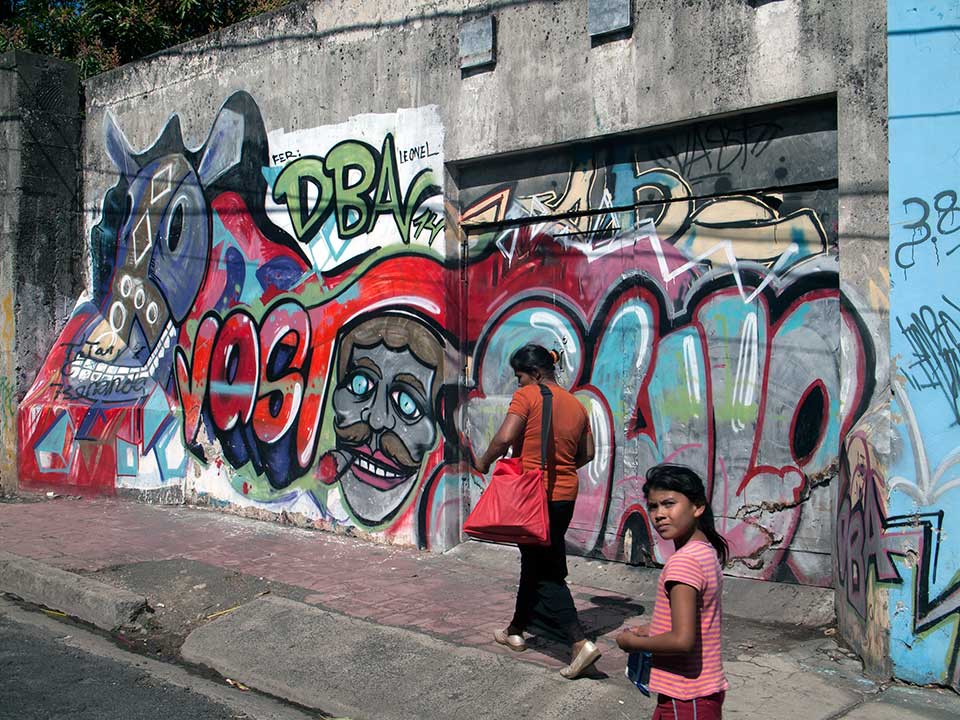
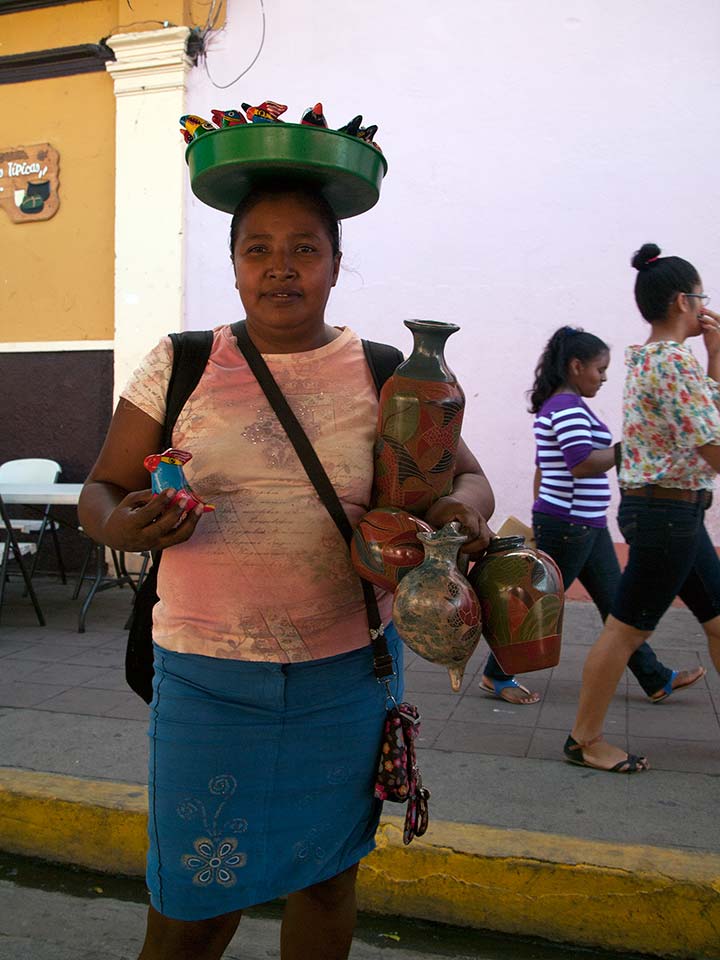
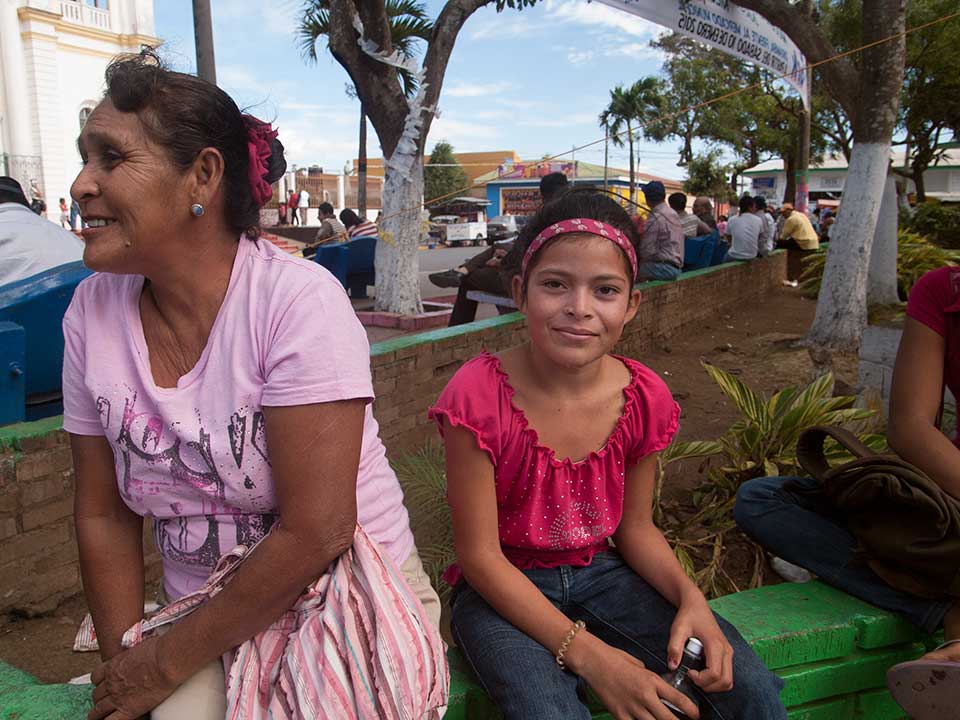
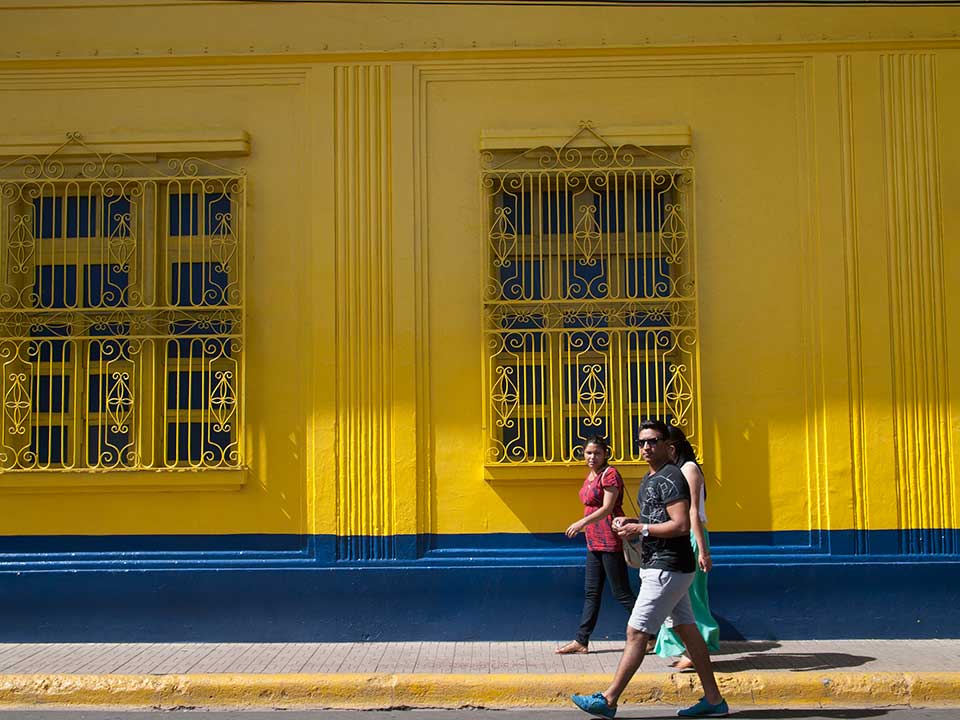
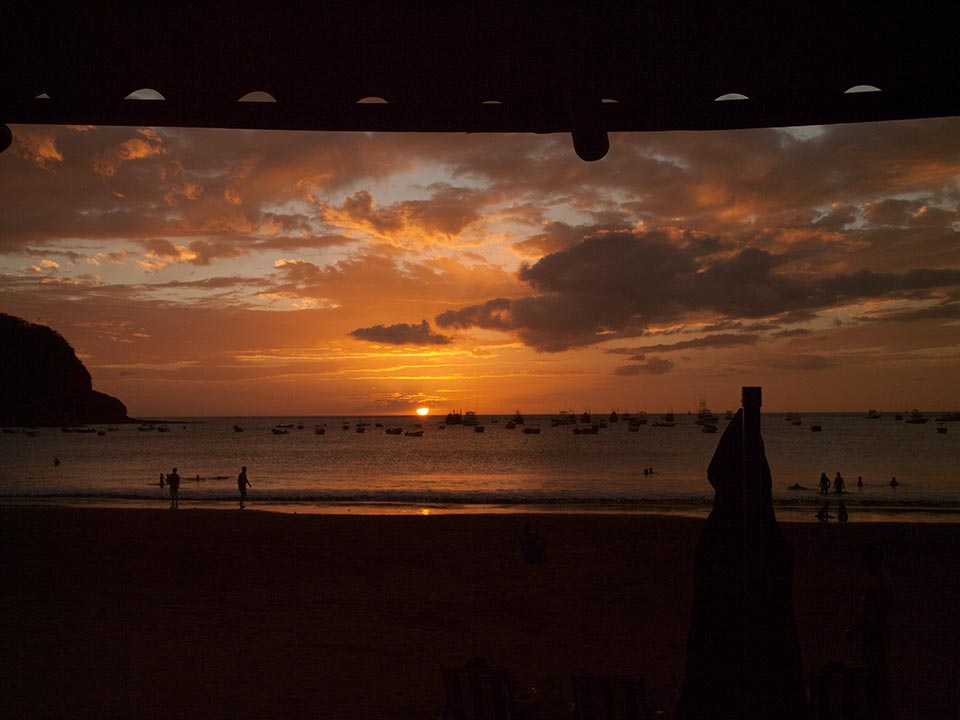
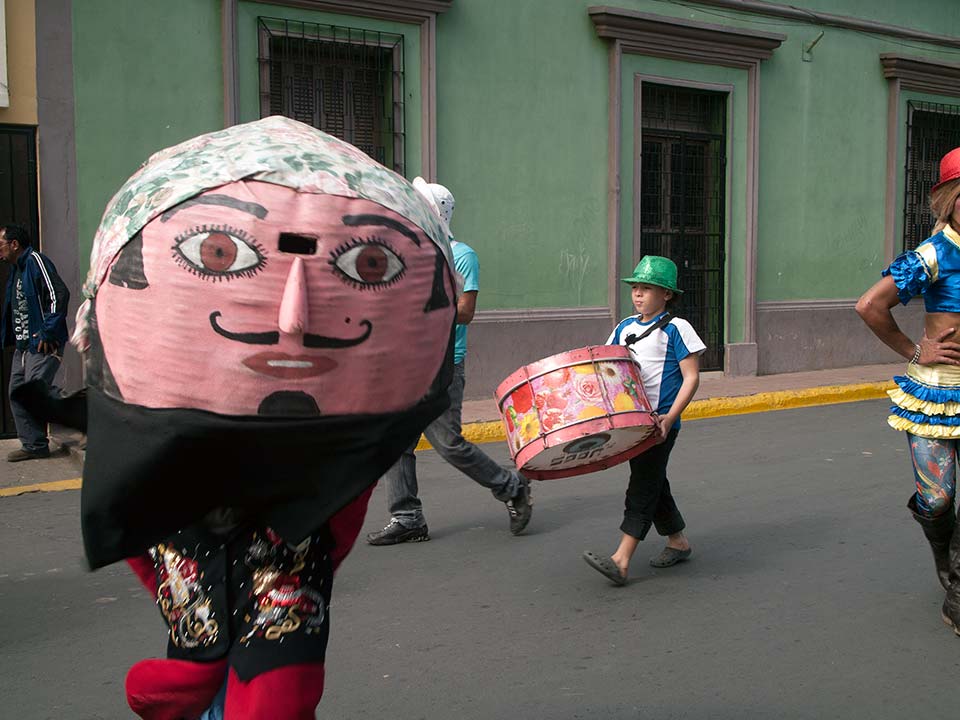
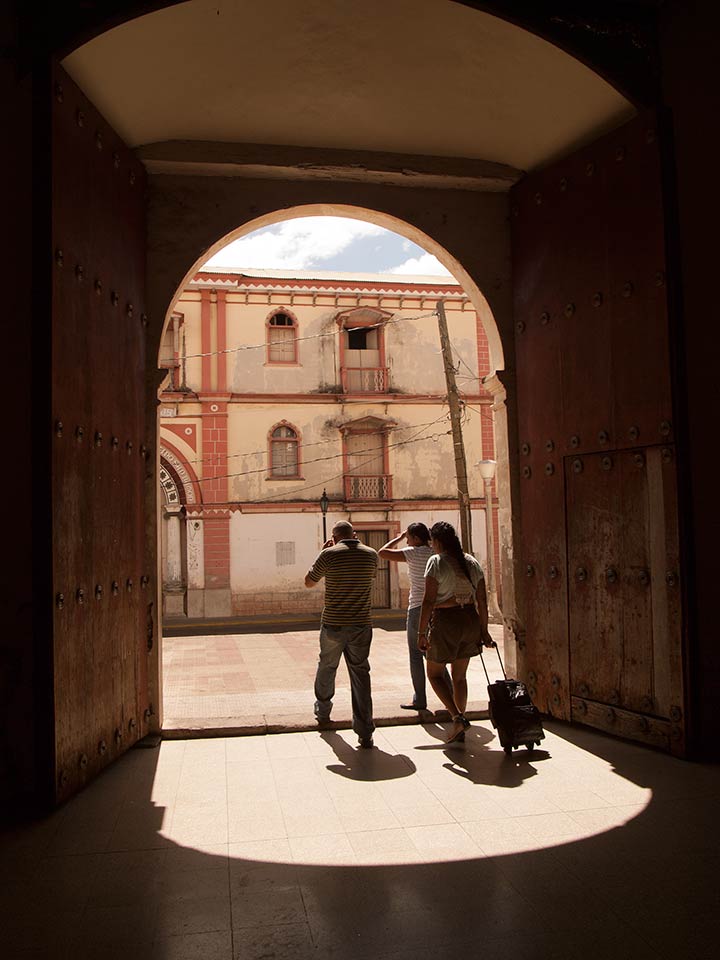
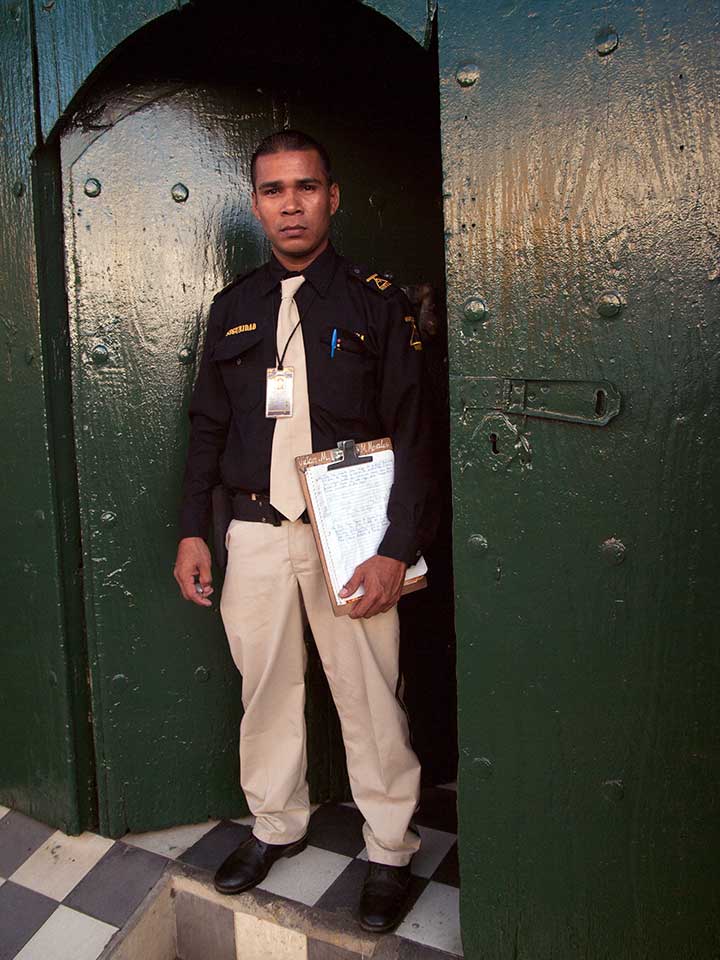
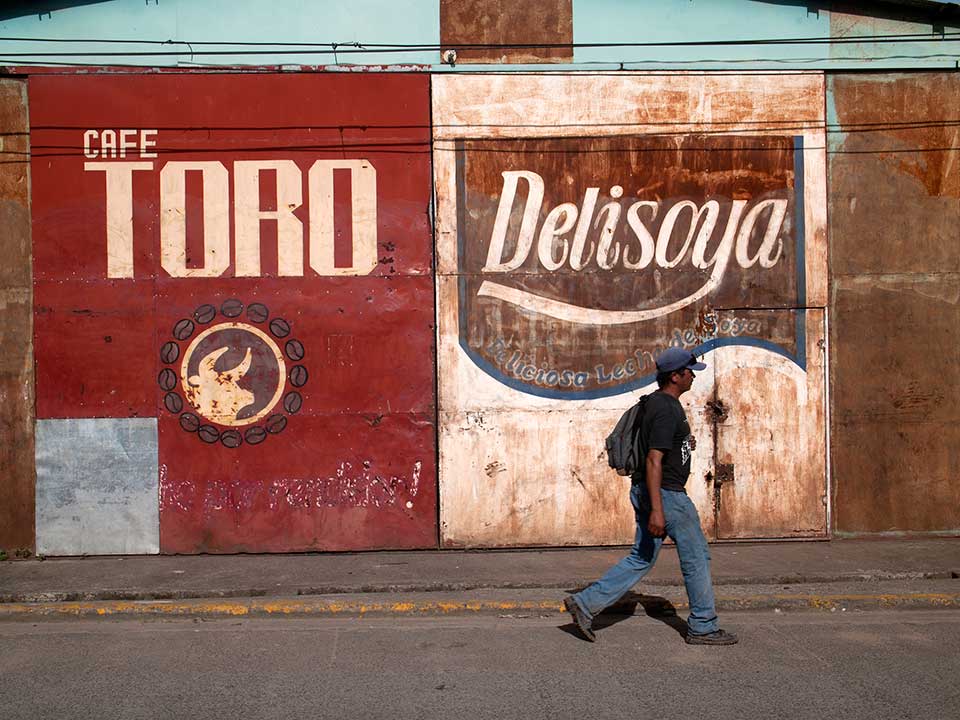
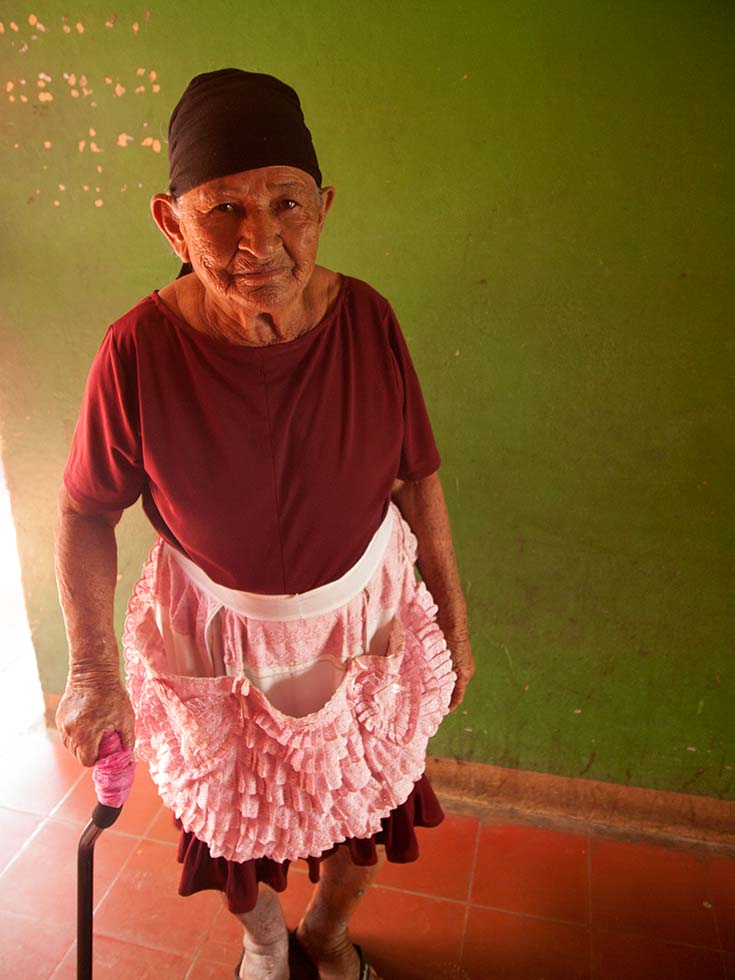
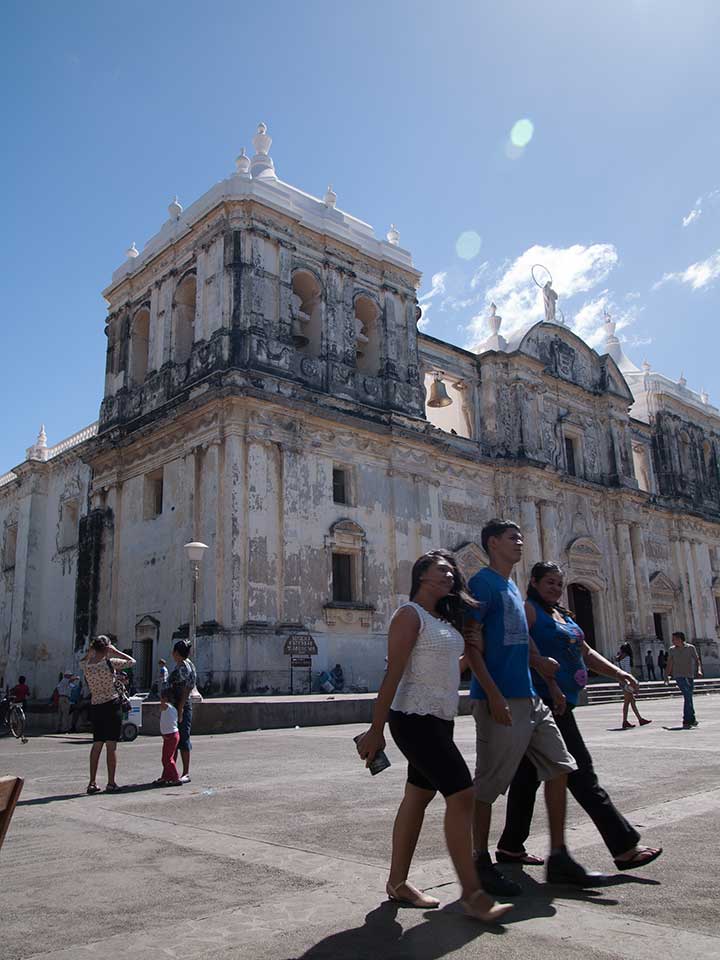
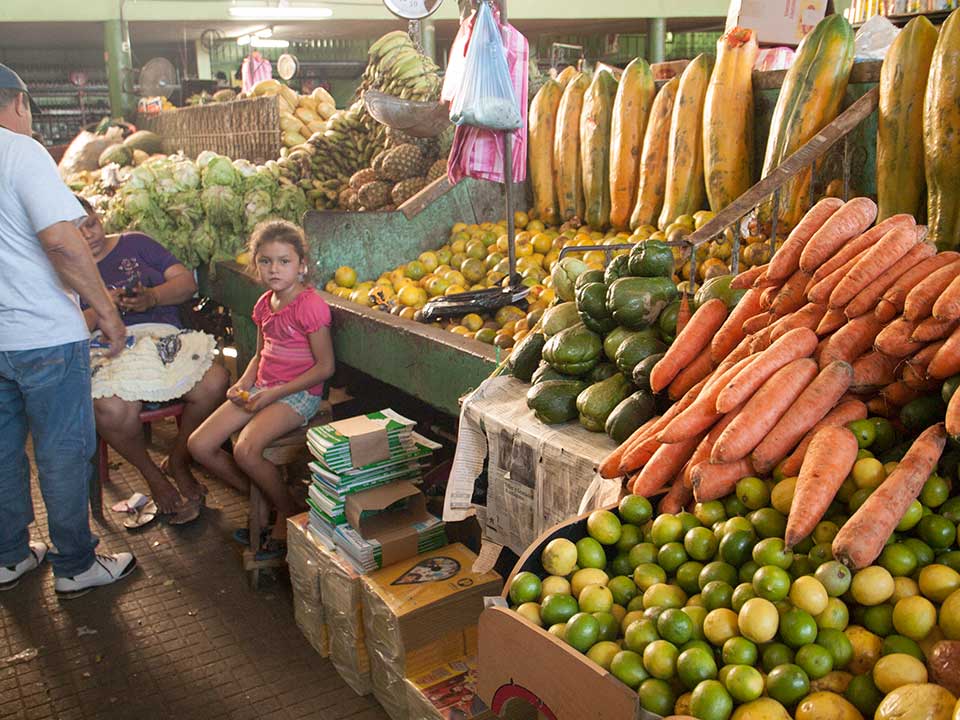
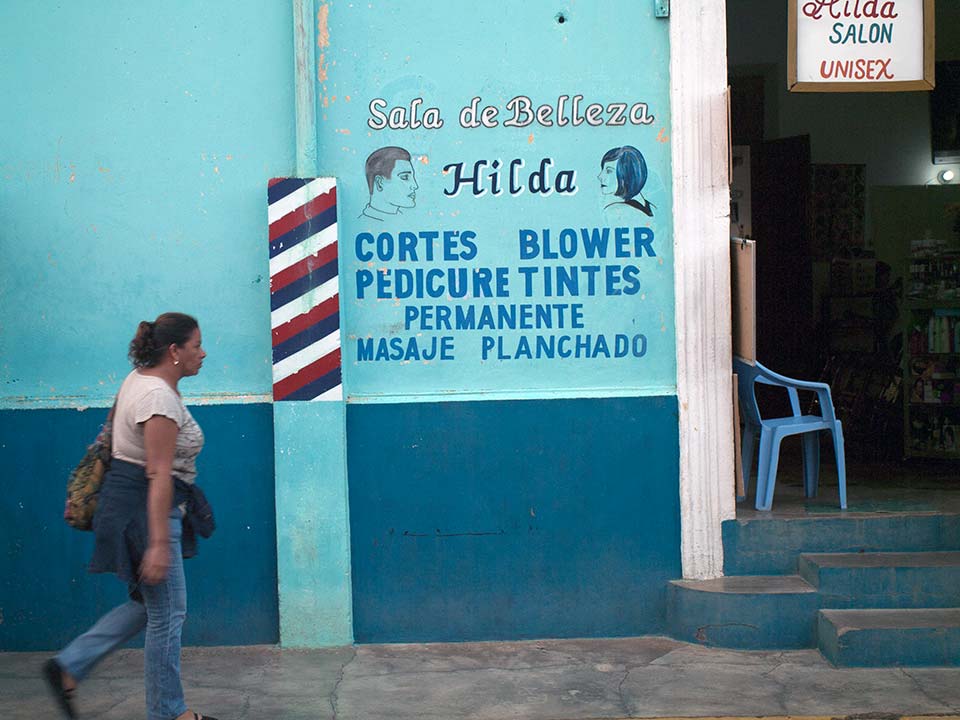
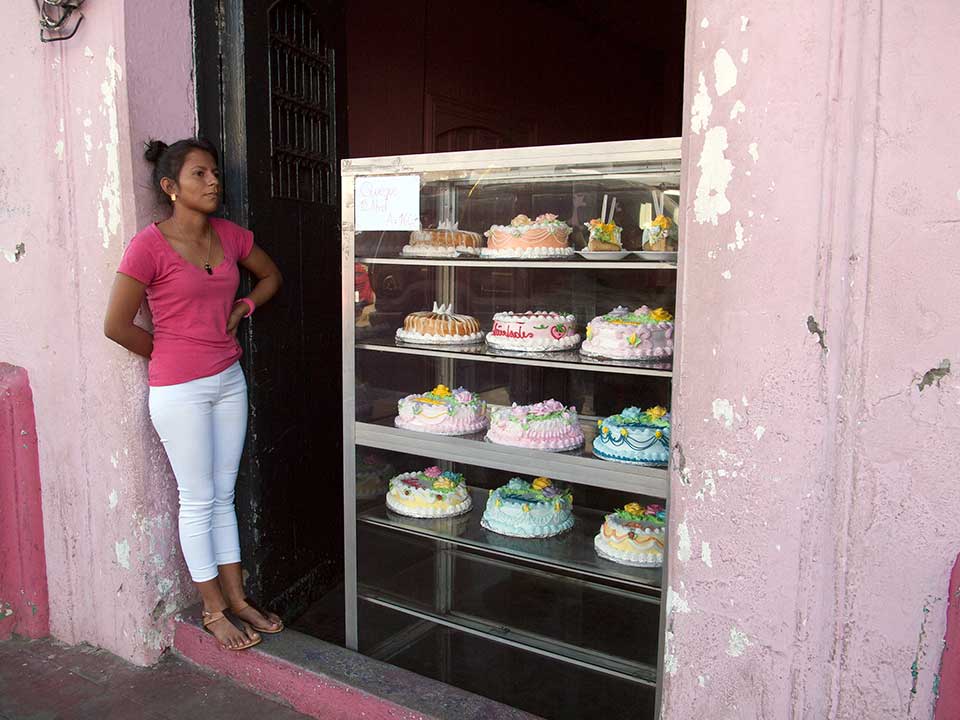
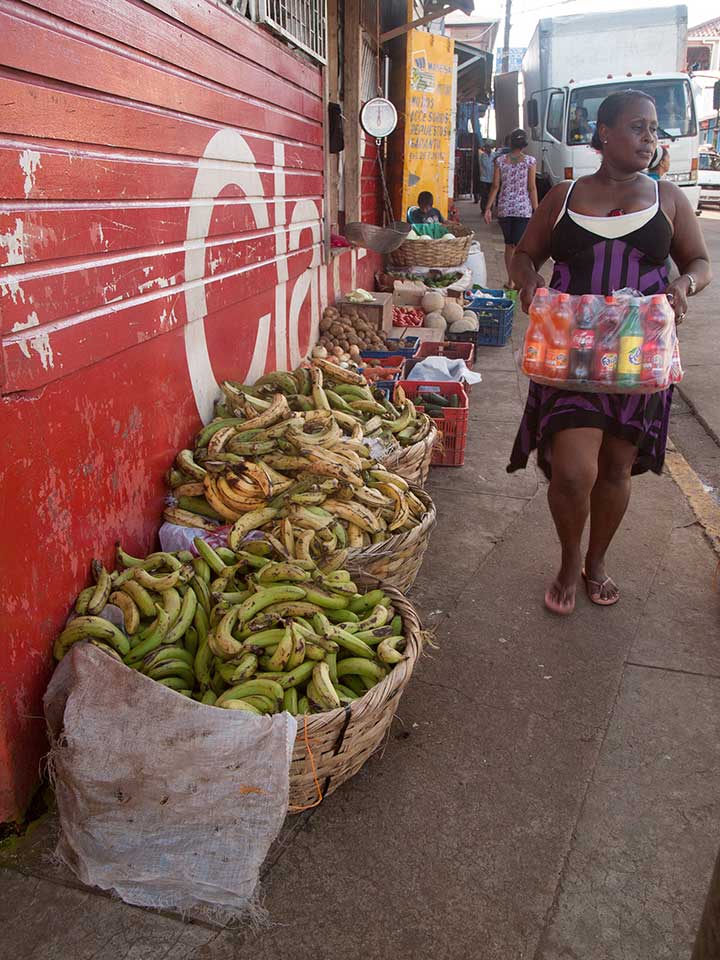
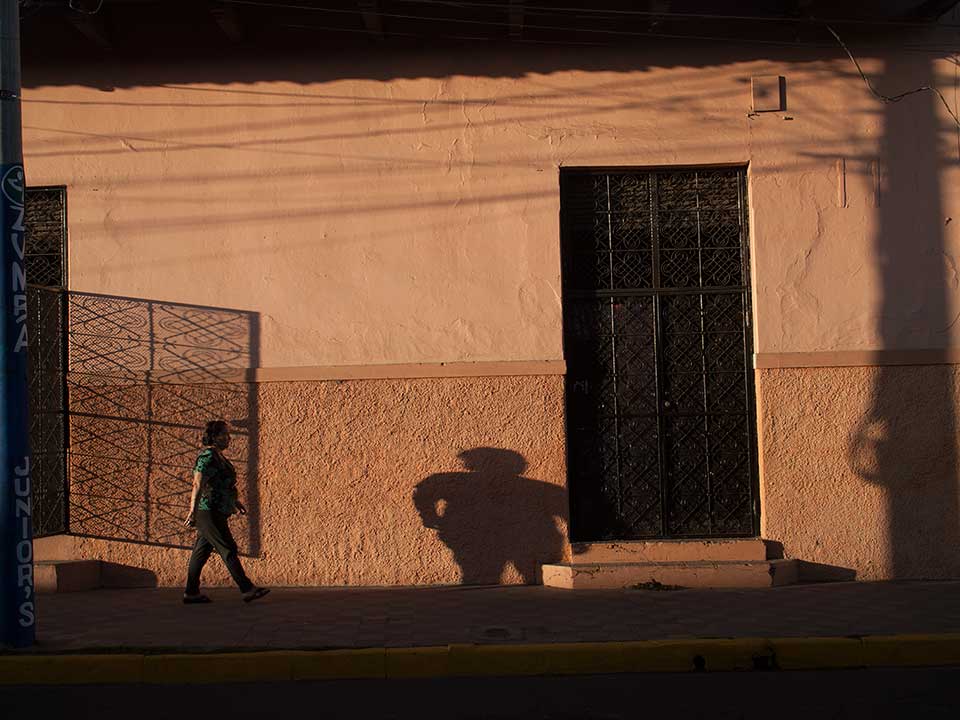
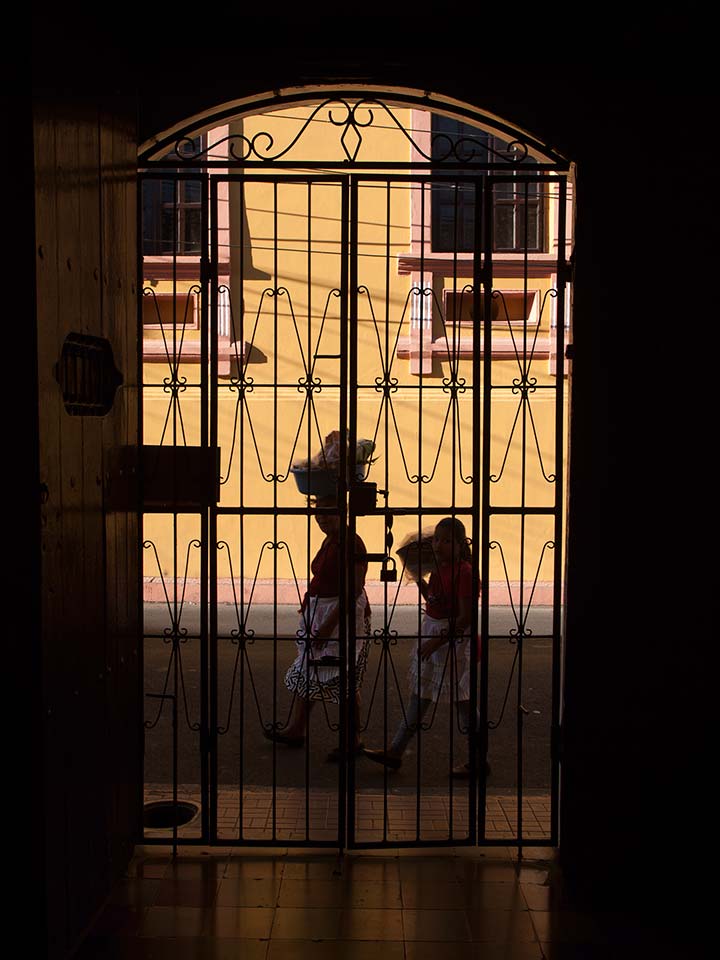
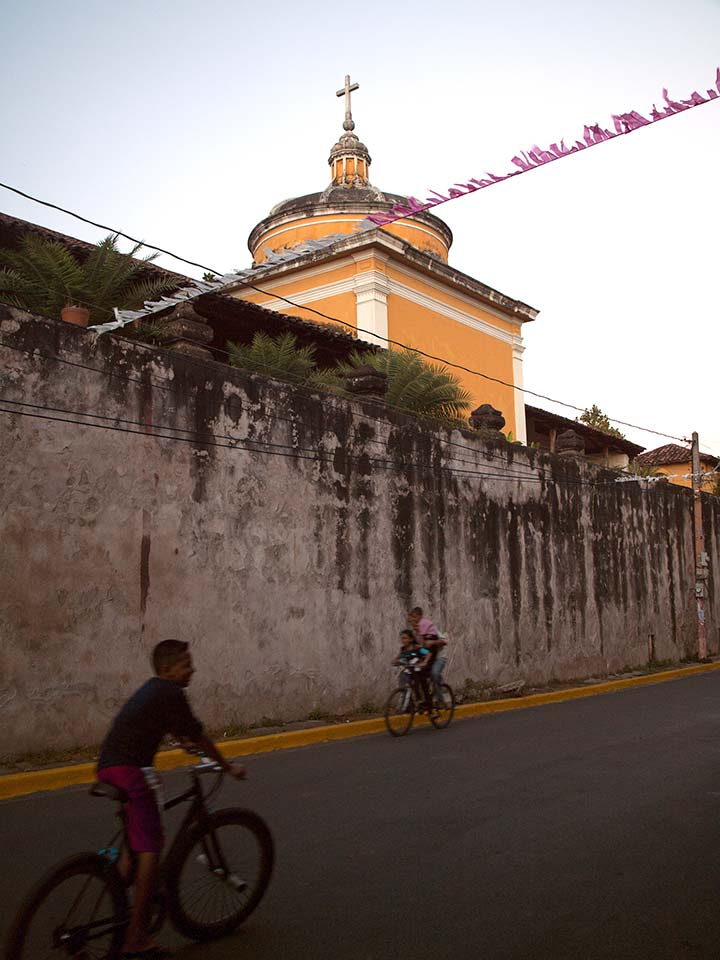
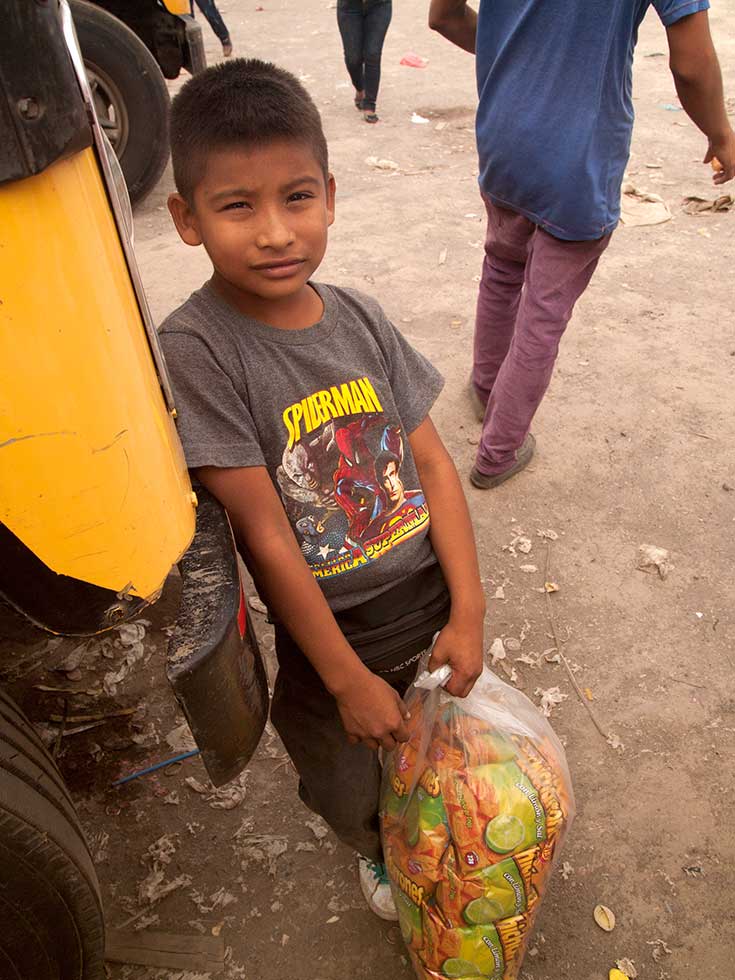
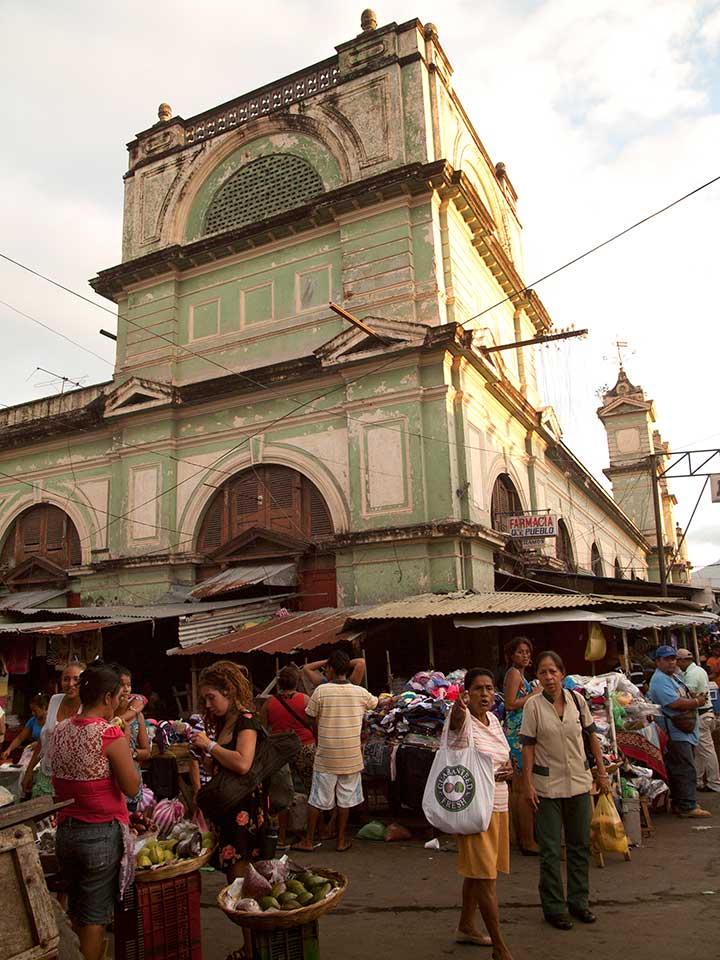
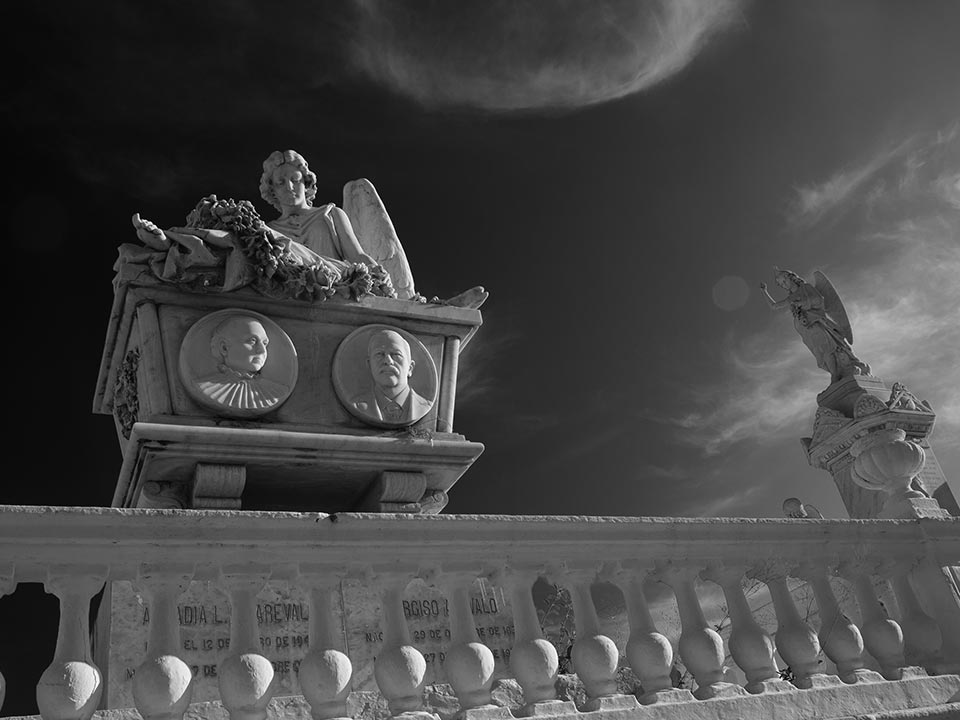
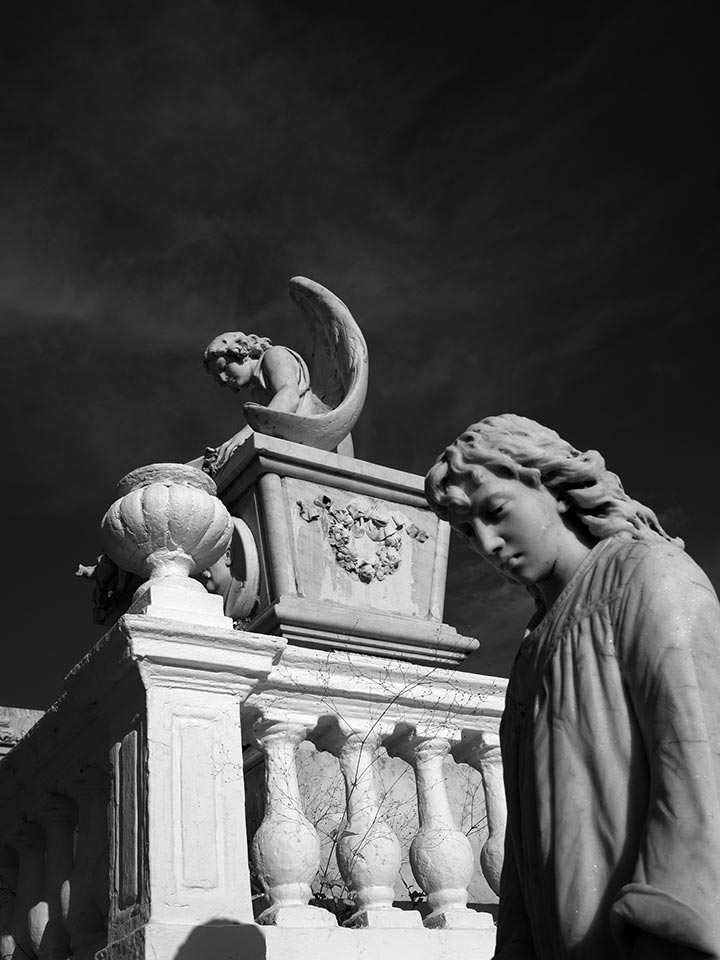
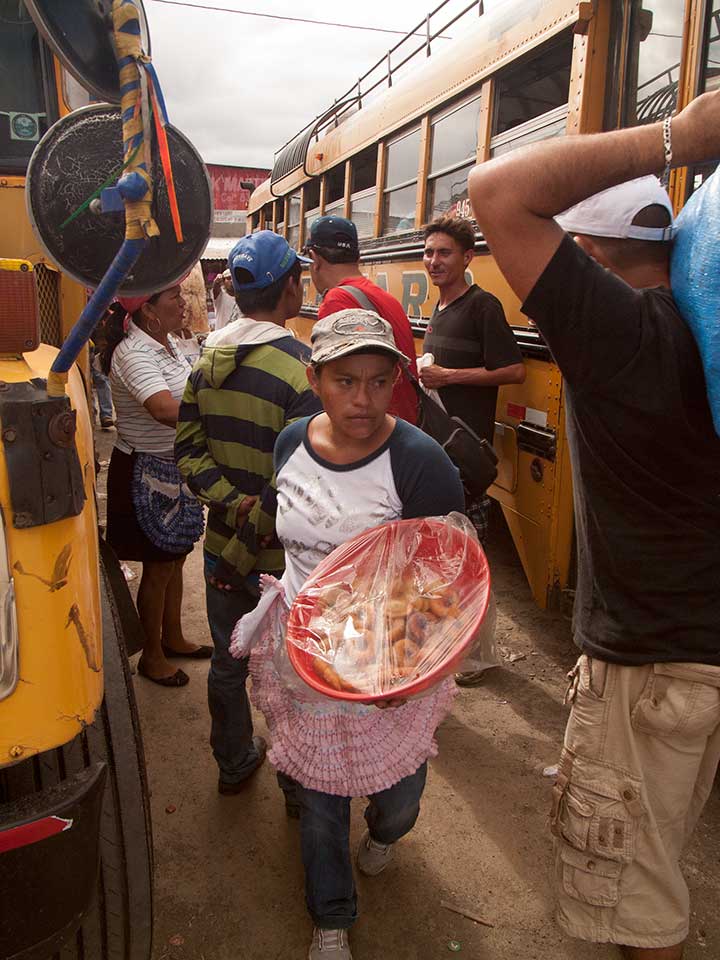
Accompanying me was my friend Grant, who also traveled with me on my second sojourn to Cuba a year before. If you can travel with another person for 48 hours without wanting to murder them at some point, they are a good travel companion.
Managua is a very difficult city in which to get your bearings. There is no downtown core. There’s rarely any signs bearing the names of the streets and there are few tall buildings to act as landmarks. The only feasible way to get around the city is by taxi. They are plentiful and quite cheap. Even the taxi drivers can seem unsure of how to find some addresses. When we caught a cab from the airport to our hotel our driver had to keep looking at the map I had printed from expedia.com to find it. The hotel ended up being in the middle of a slum. Even before nightfall the streets around the hotel were deserted. It was eerily quiet.
The restaurant in the hotel was only open for breakfast and lunch so we had to wander around for a while in search of place for dinner. It felt like we were taking our chances in doing this but hunger is a powerful motivator. Before long we came upon a Chinese restaurant. There was private security guard with a shotgun in the parking lot. When he saw us he smiled and motioned for us to go inside. None of the staff were Chinese, or even Asian. The prices were as high as you’d expect of Canada or the US. Nowhere else we ate in the country would prove to be nearly so expensive. The food was okay but we couldn’t understand the inflated prices.
It was interesting to sample a Nicaraguan take on Chinese cuisine. As it turned out, there were many Chinese restaurants in Nicaragua and we found it great fun to check them out. In none of them did we spot any Asian staff. Grant was always the only Chinese person present. The food was far from authentic but it was always tasty and a break from Nicaraguan fare. We thought it might be fun to pretend that Grant was a famous food critic from China but we never did play that angle. It would be fun to tell you about it if we had.
Nicaraguan food is generally delicious if not particularly healthy. Their dishes are starchy and often deep-fried. Lard is commonly used. Nicaraguans also can’t seem to get enough of fried chicken. Fast food chicken joints are everywhere. No developing country I’ve visited had so many obese citizens as Nicaragua. The global obesity crisis has certainly washed ashore in Nicaragua.
Beer is mostly limited to the 2 major domestic labels, Tona and Victoria. These are both light lagers mostly appealing as thirst quenchers in the heat of the day. Much less common was a brand called Imperial that was imported from neighbouring Costa Rica. It is also a lager but one with more body and flavour. It was always a treat to drink Imperial when we could find it.
Flor de Cana is the name of a Nicaraguan produced rum. It was inexpensive and very good. The 7 year old Flor de Cana won me over especially for its low price and complex flavour profile. It had an amazing aroma and taste of orange peel, cinnamon, and dates.
About the only thing I saw in Managua that intrigued me at all were some pro Sandinista murals. The Sandinistas were left wing rebels that overthrew the pitiless tyrant Anastasio Somoza in 1979. Somoza absconded to Paraguay with the bulk of Nicaragua’s national treasury. He left the country $1.6 billion in debt. The civil war between Samoza and the Sandinistas made international headlines at the time. Today, decades later, Nicaragua is still often associated with the revolution of 1979 in the minds of those who know nothing else about the country.
The Sandinista leader, Daniel Ortega, was re-elected president in 2006 after being out of office for many years. By then he had abandoned his Marxist creed and embraced capitalism. Ortega seems intent on clinging to power for the long term and he’s not shy about using extralegal means to accomplish that goal. He’s warmed up to capitalism but has exhibited less enthusiasm for real democracy. However whatever Daniel Ortega has done has no obvious impact on visitors to the country. In no way did we sense we were visiting a police state. There was no curfew anywhere and no heavy police or military presence was ever in sight. There were no military roadblocks on the highways like there is in Mexico. On the surface at least there were no intimidating signs of government repression in the country.
Leon
Leon is a relaxing town, just north of Managua. It has a good dollop of historic charm. It’s not very big and is laid out in a grid so finding your way around is very easy. Enough tourists visit there to ensure an abundant supply of restaurants and hotels but the town is far from from being over run with outsiders. The cathedral in the main square could use a paint job. It looks a little forlorn on the outside. On the other hand, it’s weathered exterior lends it an aura of time-tested antiquity. The interior of the cathedral shows none of the wear and tear apparent outside. It’s been well maintained since its construction in 1747. The Cathedral of Leon is actually the largest one in Central America. There are several other old Spanish colonial era churches in Leon.
Adjacent to the Cathedral is the main market place in Leon. This services the needs of the local populace. It’s not a place to shop for handicrafts. The market is indoors. At night food stalls are set up just outside and it’s a great place to try authentic Nicaraguan food. Vigaron for example, is a dish composed of boiled yucca (a type of root vegetable, and very starchy), cabbage salad, and pork rinds. Baho is meat (usually beef or pork), yucca, and plantains steamed in banana leaves. Women vendors at the night market served baho from large metal bowls. Eating at the night market was a cheap and atmospheric way to enjoy some of Nicaragua’s home grown cuisine.
I enjoyed visiting the Museum of the Revolution which was dedicated to preserving the memory of the 1979 revolution. It’s staffed by former Sandinista fighters. One of them gave me a tour, all in Spanish. I could understand maybe 5% of what he told me. I mostly nodded and tried to look thoughtful as he explained the exhibits to me. The photos of young revolutionaries of both sexes that were killed by Somaza’s army were rather moving.
There are a number of live volcanoes in Nicaragua. One of those close to Leon is called Volcan Cerro Negro. It’s possible to careen down the black, volcanic ash-covered slopes of Cerro Negro on a modified snow board. First though you have to hike to the top in the 35 degree heat over a black surface radiating heat back like a furnace. Of course there’s no trees, and thus no shade on the way. With that in mind I took a pass on a Cerro Negro boarding excursion.
Grenada
Grenada is another old Spanish colonial city. It’s very picturesque because most of its colonial architecture is remarkably intact. Many of these buildings are painted with vivid colours which makes them quite alluring, especially early in the morning or just before dusk. Granada is small enough to be easy to see on foot. Casually meandering through it’s streets calmly taking our time was very soothing. Even though it was hot there, there was always a breeze coming off nearby Lake Cocibolca.
Parque Colon (Columbus Park in English) is the central square in Grenada. It’s a shady oasis with many benches so it makes a great place to sit, relax, and people watch. There was a small restaurant in Parque Colon that served up some of the best Nicaraguan food we ate during our entire stay. I can’t recall the name of the place. It looked more like a kiosk than a restaurant. All of the seating was outdoors at wooden tables.
Ever since I visited Pere Lachaise cemetery in Paris way back in 1984, I’ve found cemeteries to be fascinating to photograph. They are places where death is idealized at least partly as an attempt to make it seem less ominous to the living. Angelic faces of stone looking heavenward with expressions of awe and bliss help the faithful to consider death as the beginning of an eternal second life in heaven instead of a lifeless void. Dwelling on our eventual demise would be a bleak way to journey through life for anyone regardless of their spiritual beliefs (or lack thereof).
On the way to the cemetery we came upon a funeral procession led by a horse-drawn hearse.The driver and his assistant were wearing top hats and tuxedos. All the people following the hearse were on foot. We followed along as the procession entered the cemetery. No one seemed to mind
Granada is only an hour from Managua by road but it feels like it’s a continent away. Many foreigners who’ve visited there have bought property and some even retire there. Grenada is idyllic enough for that to be an option worth considering.
Masaya
Masaya lies a little south of Managua about half way to Grenada. It’s a small city that mostly lacks charm but it does have a great crafts market that’s a good place to pick up souvenirs of Nicaragua. Many artisans – metalworkers, weavers, leather workers, painters, and musicians – live and work in Masaya and some of the goods sold in the market are made in town. The market is housed in a building that looks somewhat like a castle. Some quality merchandise is on view. Even if you’re not in the mood to buy anything it’s interesting to see the types of handicrafts produced by hand in Nicaragua. I visited twice and really enjoyed browsing, and eventually buying. There was no hassle or pressure to buy from any of the merchants. Is that because tourism in Nicaragua has yet to develop to that point or is because Nicaraguans are too proud? I can’t say.
After our first visit to Masaya’s market, Grant and I walked into a nearby restaurant that more closely resembled a cafeteria. The place was absolutely packed with townspeople. One thing that travel has taught me is to always eat where the locals are eager to dine. Various dishes were on display behind a glass partition. We pointed at what we thought looked appetizing, got our food, and luckily found a seat. Neither of us knew the name of the dish we ordered. The food looked appealing and was actually much tastier than we had imagined. I wish I had made note of the name of the place. I love finding cheap restaurants with bad decor and fabulous food.
Close to Masaya is another of Nicaragua’s volcanoes called Volcan Masaya. It’s one of only 2 volcanoes in the world where it’s possible to drive ride up to the rim. Near the end of our trip we hired an English-speaking driver recommended by our hotel in Managua to zoom us up there. As we approached the crater rim the smell of sulfuric acid became pervasive. I remembered that odour from labs in undergraduate chemistry classes. It’s quite unmistakable. It clings to your sinuses and the back of the throat and you get an acrid taste on the tongue. We walked right up to the volcano rim. There was so much sulfuric mist in the air that scarcely anything else was visible. It was useless to take photos.
Rivas
After a few days in Grenada we decided to head to the Pacific coast but not before visiting the town of Rivas. Rivas is not a tourist destination. It’s a place travelers pass through on there way to somewhere else. I didn’t care. I wanted to spend a day in a typical Nicaraguan town that was unaffected by tourism. As I walked about taking photos I didn’t see a single fellow traveler which lent assurance to my belief that Rivas really was a town off the gringo trail.
Rivas was a very sleepy little city which came as no surprise to me. It’s backwater ambiance was quite appealing. The only noteworthy thing I witnessed there was a marching band that paraded down one of the main streets. I was clueless as to what, if anything, they were celebrating.
We had booked a couple of rooms in a hotel run by a trio of elderly women. That night when we entered the place carrying beer we bought at a gas station around the corner. The ladies of the house made it clear that alcohol was not allowed on the premises. We went outside to drink our beer and the power went out leaving Rivas in inky darkness. We left for the coast the next morning.
San Juan del Sur
San Juan del Sur was a somnolent little fishing village on the Pacific coast of Nicaragua before it landed on the tourist radar when surfers began flocking there for the quality of the waves just outside of town. Since then it’s become much more developed but not yet to the point where all the locals have been priced out. San Juan del Sur remains a functioning fishing village and locals still own and operate many of the businesses. Most of the visitors there were young backpackers although the occasional cruise ship will anchor nearby and drive the less adventurous through town on their way to a quicky tour of Grenada.
San Juan is a great place to take it easy and flop on the beach or in a hammock. There were a number of good bars and good restaurants offering international cuisines. For such a small place there was an abundance of very affordable options for rooms to stay in. There was even a craft brew pub. We walked up to a partially opened door of the brew pub only to be informed that they are not open for business on Tuesdays. Nevertheless, the owners, a couple of young American guys, happened to be on the premises and they let us in and poured some samples for us on the house. Very hospitable.
A lot of Canadians travel to San Juan del Sur. One of our favourite places for food and beverages was Big Wave Dave’s which was owned by an Edmontonian. There was also a Canadian Bar that featured hockey games on their TVs and Canuckian beer on tap. I wasn’t feeling the slightest homesick so never actually set foot in the place.
Later that night I won a huge bottle of rum at a trivia contest held at one of the bars in town. It was Flor de Cana 5 year old, not my beloved 7 year old. I gave the bottle to a couple from Ontario we had met 2 days earlier on the bus on the way from Rivas.
For a late night munchies-satiating snack we hit a hole in the wall taco place run by a Mexican guy. The food was sublime. Best tacos this hombre has ever tasted.
I had felt pretty calm and at ease even before arriving in San Juan del Sur. After a couple of days there I was a study in melodious tranquility of the type that does a body good. I wouldn’t hesitate to recommend it to anyone looking for a beach getaway someplace not overly commercial but with enough hotel, bar, and restaurant options to offer a true hedonistic holiday.
The Caribbean Coast
Well before I embarked for Nicaragua I had decided that I would make time to travel out to the Caribbean coast of the country. There the society is mostly native Indian on the north coast and Afro-Caribbean on the southern part of the coast. Either way the Caribbean coast of Nicaragua is very different culturally and linguistically from the rest of the nation. For some reason Nicaraguans refer to it not as the Caribbean coast but the Atlantic Coast.
The British had an active interest in the Caribbean coast of much of Central America for many generations. They often supplied the native tribes with weapons and ammunition so they could harass Spanish settlements. The British also brought many Afro-Caribbean people to work on the coast. Today their ancestors remain there. They speak English and Creole, a language largely originating from West African vocabularies.
The Caribbean Coast is sparsely populated and mostly undeveloped. Transportation infrastructure can be rudimentary and public transport non-existent. This isolation has appealed to drug smugglers running cocaine up the east coast of Central America from Colombia to Mexico and then eventually on to the US.
I wanted to journey to a small city called Bluefields to experience a much different side to Nicaragua. I thought it intriguing to be able to visit an English-speaking culture in the middle of Latin America. Grant on the other hand was more keen on flying out to the Corn Islands. Big Corn and Litttle Corn are small Caribbean islands belonging to Nicaragua that are also inhabited by the same culture of English-speaking Afro-Caribbeans. We agreed to split up and reunite in Managua. It was necessary for us to double back to Managua from San Juan; me to hop on a bus to a town called Rama, and Grant to catch his plane to Big Corn Island.
Bluefields is accessible by road but only if dirt trails can be considered roads. Besides flying there, the best way to get to Bluefields is to travel overland to Rama and then from there, take a boat down the Rio Escondido. It took the better part of a day to journey from Managua to Rama. It was dark by the time I arrived. It was also raining for the first time since I set foot in Nicaragua. After finding a hotel room I ventured out to find a place to read and sip on a beer. I strolled into a little hole in the wall joint with bright floral print table cloths. I was the only customer. I ordered a beer from the woman behind the counter and took a table. When I ordered a second beer a man who appeared from the rear of the place refused to give me one. Not only that, he told me in a very gruff manner to get out. I have no idea why he behaved the way he did. The whole time I was there I did nothing but read and sip from my bottle. What else could I do but pay up and leave?
I had to get up extra early in the morning to get the first boat to Bluefields. It was still raining. Heavily, in fact. After making my way to the pier I could see a few wooden boats moored there. Each one sat about 16 passengers and had a large outboard motor. I couldn’t help notice that none of those boats had any sort of canopy. I wondered what measures would be taken to keep the passengers dry in the driving rain. It didn’t take long to find out.
I kept my umbrella opened as I sat among the other passengers. As soon as everyone had taken their seat, the pilot produced a large dark plastic tarp that everyone huddled under. Those sitting along the edge of the boat – that included me – had to hold the tarp down in place with one hand so it wouldn’t blow away as soon as we got moving. The boat’s engine was powerful and once we were out in the middle of the river and going full speed we were moving fast. The tarp flapped like crazy in the wind and some rain inevitably soaked my left side. The sound of the tarp slapping around was really rather loud. I had to hold my piece of the tarp with a firm grip. The wind whipping the tarp was energetic and letting go would mean getting soaked. I was worried more about my camera than myself. I hadn’t pulled out the waterproof liner that covers my camera bag and there was no possibility of being able to do that with my left hand clutching the tarp.
The rain stopped just long enough for me to snap a few photos and get my camera bag secured against moisture. The bag had not gotten wet which of course was a huge relief. Once the rain recommenced we all had to get under the tarp again for the duration of the trip.
I was beginning to wonder if my left hand was going to be permanently curled into a fist when we pulled into Bluefield’s harbour.
I spent 2 nights in Bluefields. The rain came and went. I didn’t really mind the rain. The cooler temperatures were more to my liking. I saw very few other travelers there. Truth be told, there really is nothing to see or do in Bluefields. I didn’t journey there with great expectations but I had hoped that I might get some good street photography work done. Street photography depends on luck as much as anything else. I didn’t find any great backdrops for candid street portraits or see any people with a style or look unique enough to want to shoot . I bused back to Managua without the cheerfulness of thinking that I had captured some good images with my camera.
When I arrived in Managua it was midnight. Luckily I saw a waiting cab and hailed it. I showed the driver a business card for the hotel I wanted to go to. He examined it closely and then called somebody on his phone. He was asking someone for directions to the hotel. Like I mentioned earlier, even cab drivers can have difficulty navigating through the maze of Managua. He asked to look at the card a couple of times on the way. There was a small map on the reverse side. I had to wake up the staff to let me into the hotel.
Diriamba
Grant showed up at the hotel the next day like we had planned. I wanted to to visit the so called Pueblos Blancos. They are a collection of towns in the hill country south of Managua that are famed for the quality of their handicrafts. Being at around 500 meters in elevation they are noticeably cooler than the capital. At first I thought of just taking a bus to Diriamba, one of the Pueblos Blancos towns. That would have involved transferring a few times and thus would have taken awhile. Instead I settled on hiring one of the English-speaking drivers recommended by our hotel’s management. We used their services previously and they had proved to likeable and informative.
For the first time in all my travels I was ending a trip several hundred dollars under budget. I hadn’t gotten a single advance on my credit card in Nicaragua. After traveling independently for more than 30 years I had finally learned how to properly budget a trip. That assured me that I could splurge the $50 US to hire the driver.
The Pueblos Blancos were really pleasant. The area is largely forested and each of the small towns we passed through was colourful and had a peaceful vibe.
The Festival of San Sebastian is held annually in Diriamba. This religious celebration features folkloric elements of the Native past melded with Catholicism and it’s been held since colonial times. The participants in the festival wear masks and costumes ablaze with colours. I was certain I would be able to get some good photos. No one I asked in Managua knew the exact date of the Festival of San Sebastion. My guidebook only stated that it took place in the third week of January with no particular day mentioned. All I could do was hope that I was arriving on the right day of the week. Well as it turned out, the festival was already over. I had missed it by a couple of days. nevertheless I was happy to have visited Diriamba. It was a laid back place with clean streets and many brightly varicoloured buildings. I did manage to see and photograph a small troupe of street performers in surrealistic outfits. They hammed it up for my camera for a minute or so before moving on.
There was still a festive air in the town. There were small ferris wheels and other rides set up for the children and many booths were selling street snacks in the main square. People seemed in a good mood. Some asked me to photograph them and others assumed silly poses in front of my camera.
I was impressed with the quantity and quality of street art in the town. Small provincial towns and avant garde art don’t normally go hand in hand. I could see how a charming place like Diriamba could attract young artists as a good, inexpensive place to live and work. Perhaps the municipal government encouraged young artists to move there and let them display their talents in public as a way to encourage them to. That would make sense because small towns usually lose their young people to the bigger cities and young artists have a hard time getting the chance to showcase their art. It would have made for a mutually beneficial accord.
Nicaragua in now at peace. The wars and political strife ’70’s and ’80’s are long past. It’s a safe country for visitors, at least outside of Managua. The crime rate is lower than in the tourist haven of Costa Rica. Nicaragua is also a much cheaper country than Costa Rica. There’s a refreshing lack of touts and tourists don’t get subjected to hard sell tactics in marketplaces. Grant and I both really enjoyed ourselves there and we came away with fond memories to cherish for years to come. Nicaragua in not as well trodden by tourists as Costa Rica but that’s reason enough in itself to consider it as a holiday destination.